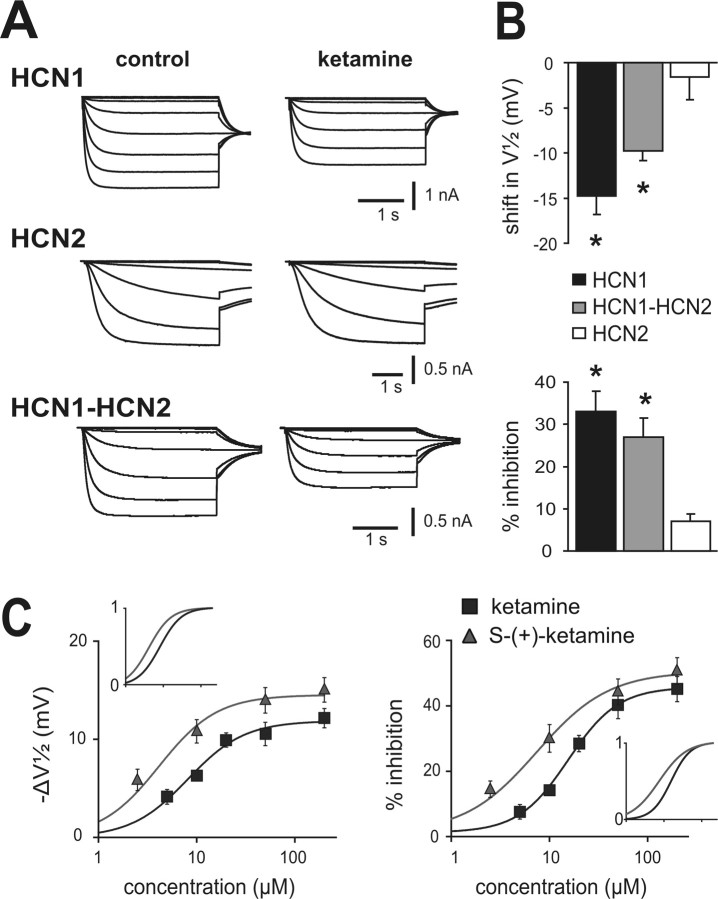Figure 1.
Ketamine selectively inhibits currents from HCN1 subunit-containing channels. A, Sample currents from HEK293 cells expressing mHCN1, mHCN2, and mHCN1–mHCN2 channel constructs evoked by hyperpolarizing voltage steps from −38 to −118 mV, before and during exposure to ketamine (20 μm); conditioning voltage steps were followed by a step to −88 mV for tail current analysis. B, Summary data showing averaged (±SEM) shift in half activation potential (V½; top) and current inhibition (percentage from control; bottom) evoked by ketamine for each of the indicated HCN channel constructs. *p < 0.05 by paired t test for ketamine versus control (n = 5, 5, and 8 for mHCN1, mHCN2, and mHCN1–mHCN2). C, Averaged values for shift in V½ (left) and amplitude inhibition (right) of heteromeric mHCN1–mHCN2 currents at different concentrations of racemic ketamine (black squares) or its S-(+)-enantiomer (gray triangles). For the shift in V½, calculated EC50 values were, respectively, 8.2 ± 1.2 μm and 4.1 ± 1.2 μm, with corresponding maximal values of −11.9 ± 0.7 mV and −14.5 ± 0.9 mV; for amplitude inhibition, EC50 values were 15.6 ± 1.2 μm and 7.4 ± 1.3 μm, with corresponding maximal values of 44.5 ± 3.0% and 49.3 ± 3.7% inhibition. The insets show normalized fits to highlight differences in potency between ketamine and S-(+)-ketamine. For both ΔV½ and percentage inhibition, EC50 values were significantly different; also, the maximum shift in V½ was significantly greater for S-(+)-ketamine (p < 0.05 by t test, n ≥ 8 cells at each concentration).

